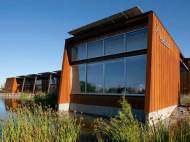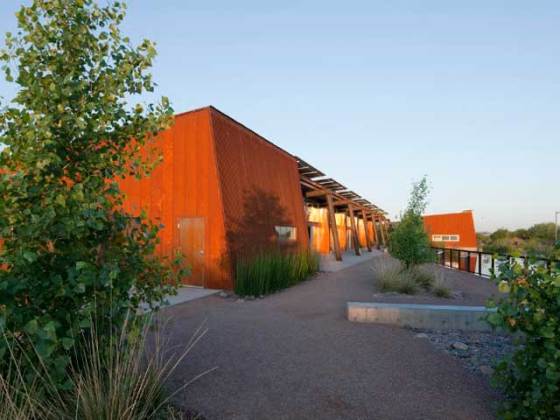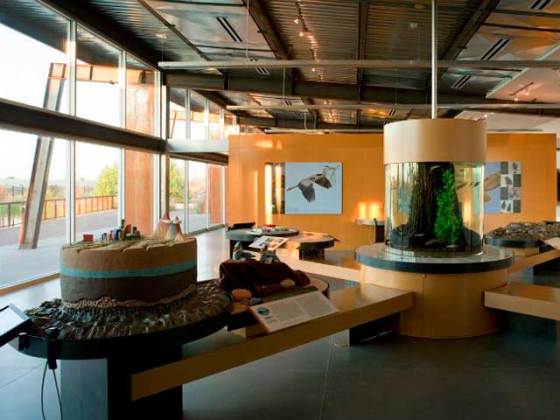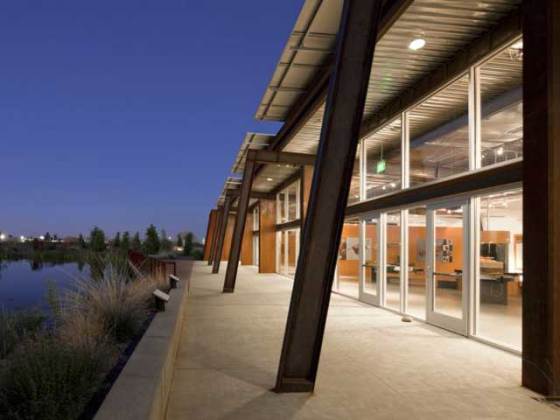Green architecture – Nina Mason Pulliam Rio Salado Audubon Center
 Nina Mason Pulliam Rio Salado Audubon Center, a free-admission nature education center in the Río Salado Habitat Restoration Area, located less than two miles from downtown Phoenix, earned LEED Platinum certification and became the first building of that kind in Phoenix. Opened in fall, 2009, the center is operated by Audubon Arizona – a non-profit nature conservation organization.
Nina Mason Pulliam Rio Salado Audubon Center, a free-admission nature education center in the Río Salado Habitat Restoration Area, located less than two miles from downtown Phoenix, earned LEED Platinum certification and became the first building of that kind in Phoenix. Opened in fall, 2009, the center is operated by Audubon Arizona – a non-profit nature conservation organization.
“We’re thrilled to have a Platinum rated facility. Highlighting sustainable practices is a core part of our mission, and we are uniquely situated to help members of the public understand how green building and practices can benefit habitats for birds and other wildlife in Arizona”, said Sarah Porter, Audubon Arizona Executive Director. “We welcome the public to come see for themselves.”
Designed by architect Philip Weddle, of Weddle Gilmore Architects, and built by Okland Construction, the center includes an interactive nature conservancy exhibition as well as a multi-purpose learning center for community use. The exhibition space introduces several of the on-site interpretive trails to best provide opportunities for self-directed learning and exploration. It also features a 600-acre park space in the historic Salt River corridor which provides a lush habitat for over 200 species of birds and other wildlife.
“Audubon came to us with a strong commitment to sustainable building, but an understandably limited amount of funding for the project, given that they’re a non-profit. The Audubon Center shows that a Platinum rating is attainable on a relatively modest budget”, said Weddle. “We thought the corrugated steel finish had a nice connection to the canyon walls that streak with a range of colors.”
The steel used in the structure was made from around 90 percent recycled content. Almost half of all building materials were sourced locally, 28 percent of the building materials met LEED criteria for recycled content, and approximately 90 percent of all construction waste was diverted from landfills.
The project includes an integrated 20 KW photovoltaic solar system that generates approximately half of the energy needed for the Center’s operation. Abundance of daylight eliminates the need for interior lighting, and buildings have ultrasonic sensors for lighting needs in order to lower the energy consumption. Dual-pane windows and insulation help lowering the energy use during hotter months.
There are three habitat zones (dry, lush and wetland) for this project. All zones are graded to capture 90 percent of the rainfall through bio-swales (storm-water runoff systems). An on-site water treatment system is used to remove waste from the bathrooms, clean the water and reuse water for sub-surface irrigation. The bathrooms also have low-flow fixtures in order to preserve potable water.












Leave your response!